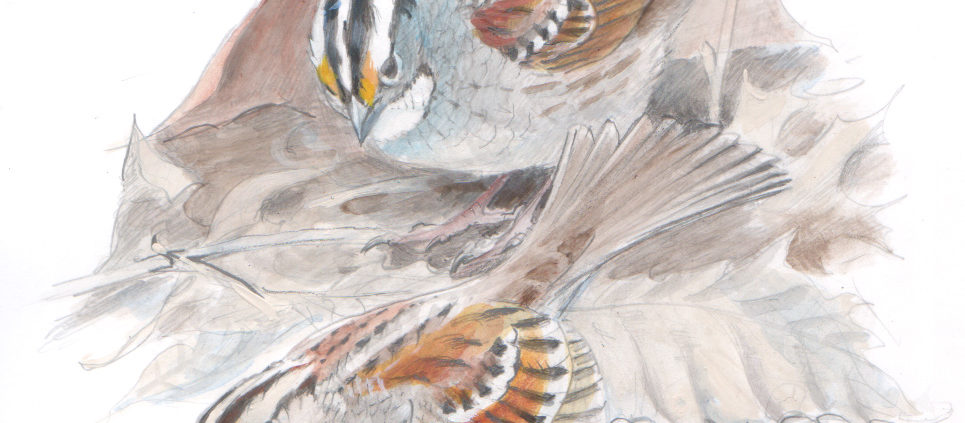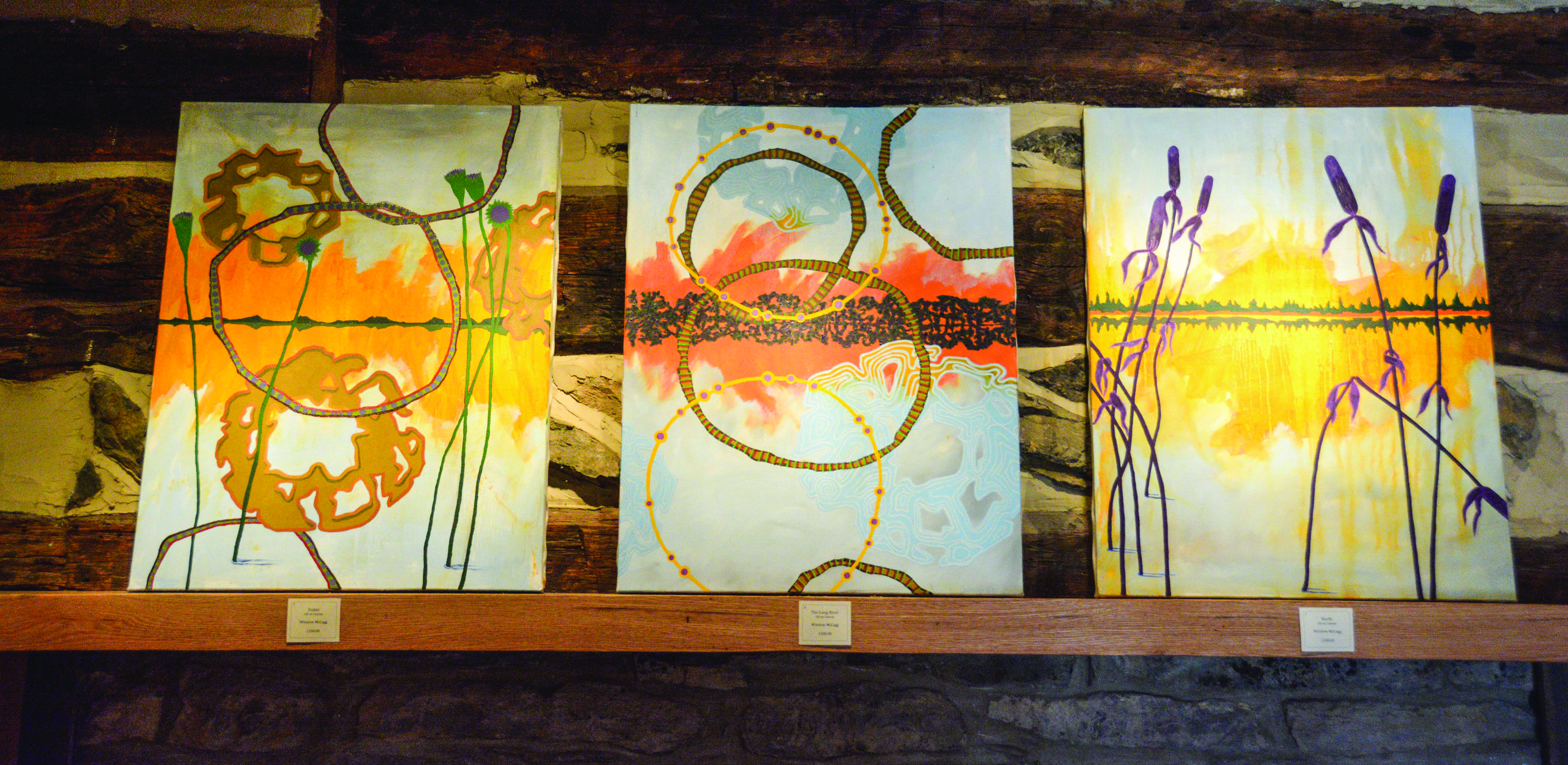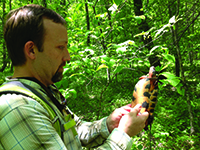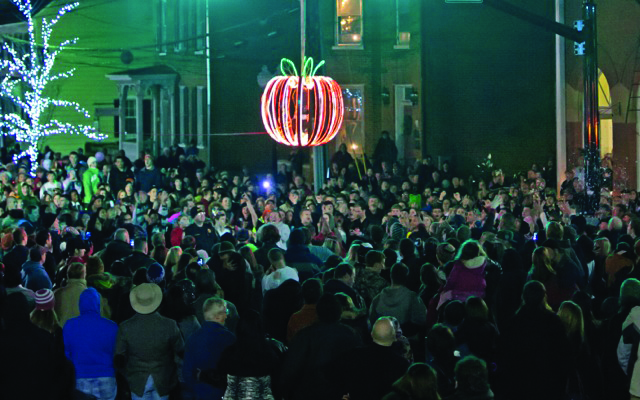Winter Birds Need Food But Also Good Habitat
As the Crow Flies
Story and artwork by Doug Pifer
An abundance of good bird habitat is a benefit of life in an old farmhouse. While still in bed, we sometimes look out at a couple of house finches or bluebirds drinking runoff melted from the frosted metal roof. Or we catch the flicker of wings as a yellow-rumped warbler or a Carolina wren perch momentarily, scanning the window frame for dormant spiders or other insects.
This winter morning when I let the dogs out, they scared up a mixed flock of songbirds from the driveway: dark-eyed juncos, white-throated and song sparrows, and house finches. I heard a Carolina wren, a cardinal, and a tufted titmouse singing from one of our mature shade trees. While walking out to pick up the morning paper, I also noticed chickadees and nuthatches clambering among the lichen-covered limbs of the aging Kentucky coffee tree in the front yard.
Yesterday I saw a downy woodpecker testing various limbs to see which was best for a drum-roll. Sometimes he is joined by a pair of red-bellied woodpeckers. If I’m lucky, I might see a yellow-bellied sapsucker returning to one of the neat rows of sap wells he drilled in the trunk of our big tulip tree.
Last evening I heard the loud “check” call of the mockingbird that roosts in our big forsythia bush and saw him perched on top of it. Down by the creek, we sometimes hear the rattle of a kingfisher, or see the shadow of a great blue heron as it glides over the pasture on the way to one of his favorite fishing holes in the stream adjacent to our place.
Many folks are surprised when I tell them we never put out suet, seed or any type of supplemental food for the birds. My wife and I don’t own any kind of bird feeder other than those we use for our domestic poultry.
We don’t oppose bird feeding. Maintaining a regular source of supplemental food in appropriate feeders is a great way for people to bring birds close enough to observe and enjoy. And if you have kids, I think the educational value far outweighs any downside to artificially feeding wildlife. We don’t feed birds because we don’t have to. Wherever we’ve lived, we’ve encouraged year-round habitat for birds. This includes leaving the stems and seeds of last year’s flower gardens standing, planting trees that have fruits or seeds attractive to birds, and encouraging natural vegetation to flourish along our fence lines.
No place we’ve ever lived would appear in a stylish house and garden magazine or website. But we’ve offered birds, mammals, insects and other wildlife places to feed and hide. Overgrown fences give wildlife a place to evade predators, and they provide nesting, loafing, and denning sites for birds and mammals. We’ve planted native trees and shrubs along our stream as a natural buffer between our fenced pasture and the wetland. This offers wildlife a clean source of water, prevents erosion, and maintains a clean water flow from the nearby spring to our own stream, which flows into Rocky Marsh Run and, after a mile or so, into the Potomac River.
If, like us, you’re lucky enough to live on an old farmstead, wildlife is already there. Your encouragement and care will allow it to flourish.
















